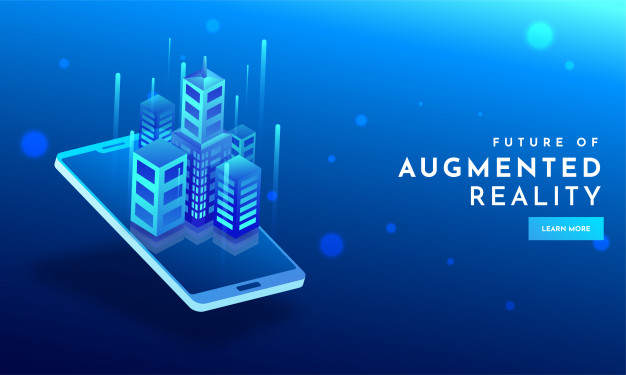
Augmented reality (AR) adds digital content onto a live camera feed, making that digital content look as if it is part of the physical world around you. This could be anything from making your face look like a giraffe to overlaying digital directions onto the physical streets around you.
Augmented reality can let you see how furniture would look in your living room, or play a digital board game on a cereal box. All these examples require understanding the physical world from the camera feed, i.e. the AR system must understand what is where in the world before adding relevant digital content at the right place. Augmented Reality (AR) adds digital elements to the camera of your smartphone, creating the illusion that holographic content is a part of a physical world around you. Unlike virtual reality (VR), you are not immersed in an artificial environment. In turn, AR changes reality by adding three-dimensional objects, sounds, videos, graphics. These all need to be understood when using augmented and VR technologies such its location data capture and mapping applications.
Facial Recognition: You’ve seen video clips depicting “real” faces taking advantage who they want them too but this has got some challenges with regard capturing different facial expressions given each person’s unique features. A solution based primarily upon machine learning techniques known for high accuracy algorithms was presented during NIPS 2016 called Face Intelligence Platforms™ which brings together advanced technology designed specifically against those tasks including motion recognition and image processing systems across hardware, software models integrating realtime communication protocols plus human/machine interaction skillsets developed over many years through extensive research experiments.
Augmented Reality Devices
Augmented Reality can be used on all screens and connected devices :
Through mobile devices like smartphones and tablets, Augmented Reality acts like a magic window; through the viewer you can see holograms and manipulate 3D models. Hundreds of Augmented Reality apps are available on iPhone, iPad, and Android.
On PC and connected TV players, Augmented Reality works through a webcam and relayed through the screen. This can be quite cumbersome when you have to manipulate a tracker in front of your screen.
On head mounted displays, glasses, and lenses, Augmented Reality becomes a part of your entire field of view, making for more life-like Augmented Reality experiences. It almost feels like Ironman with the help of Jarvis.
I don’t think this should surprise anyone who has played around VR ever since AR burst onto the scene back at Oculus Connect 4 2016 and Google was kind enough by allowing developers (both HTC Vive headset manufacturers) both access directly to their hardware as well – if they so desire. The possibilities were endless!
How Does Augmented Reality Work?
Augmented reality is applied in a variety of ways – you can use it to make yourself look like a cute kitten or find directions in malls. AR allows you to virtually try on glasses or see how new home appliances will look like on your desk.
The app recognizes a person’s foot, by setting virtual footprint on the actual foot and its motion, so the user could kick the virtual soccer ball down the alley on the screen and ‘remember’ the player’s foot to keep scores for each session. Thanks to the function of object recognition, the user’s foot can be detected, allowing the program to identify each player and offer a new game for another user respectively.
Before breaking this down into more detail, let’s use a concrete example to make this clearer. Consider playing an augmented reality board game using a real cereal box as the physical support like in the figure below. First, computer vision processes the raw image from the camera, and recognizes the cereal box. It then gets rid not only a reference point with which we recognize players (if there are any) but also identifies what cereals they’re eating at that specific time based upon their posture. So if I were wearing my shoes while walking up stairs — since having them locked under these boots doesn’t actually stop me being able move even though technically all humans do have those sorts 2 keys already attached when used
How much does augmented reality application development cost?
The cost and duration of AR application development depend on many factors, including application type, SDK, the complexity of 3D models, etc. Read more about how much it costs to develop AR applications and how it happens in our previous article.